
Last month we reported on the successful British expedition to the sub-Antarctic island of South Georgia that made a 16-day ski traverse of the Salvesen Range. The group made a number of first ascents along the way including Mt Baume (1912m) and the spectacular Starbuck Peak (1434m). The team comprising Skip Novak, Stephen Venables, Crag Jones, Henry Chaplin, Simon Richardson and David Lund have now returned, and Stephen and Simon have shared with us an insight into their trip...
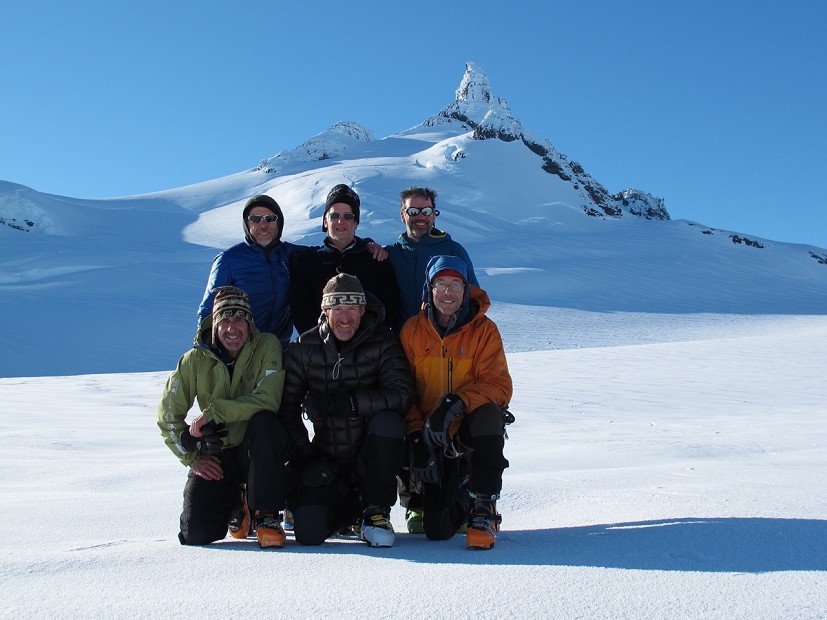
Stephen: I first saw Mt Baume on my first expedition to South Georgia 27 years ago. Brian Davison and I skied past this beautiful mountain on the approach to the first ascent of Mt Carse (the same day that Lindsay Griffin and Julian Freeman-Attwood were making the first ascent of Mt Kling). Several hours later, photographing Brian coming up the final slopes of Carse at sunset, I noticed this wonderfully pointy peak silhouetted out to the west, which turned out to be Starbuck Peak, named after an American 19th century whaling fleet owner. Fast forward twenty years and in 2010 I skied past Baume again, on my fourth trip to South Georgia. And this time we continued further south, skiing right past Starbuck, seeing its even more pointy northern aspect. I also got a good look at the west face and noticed a prominent ledge line running right the way across the face, apparently accessible from high on the north ridge. Perhaps this was the way to climb it?
Simon: Situated in the middle of the Southern Ocean, South Georgia is a very difficult place to get to. The only feasible way for a mountaineering party is to go by sailing boat. We set off from the Falkland Islands in Skip Novak’s yacht Pelagic Australis and sailed for five days to reach the eastern tip of the island. South Georgia has some of the worst weather in the world, and I was warned before we left that we would be extremely lucky to climb a single peak.
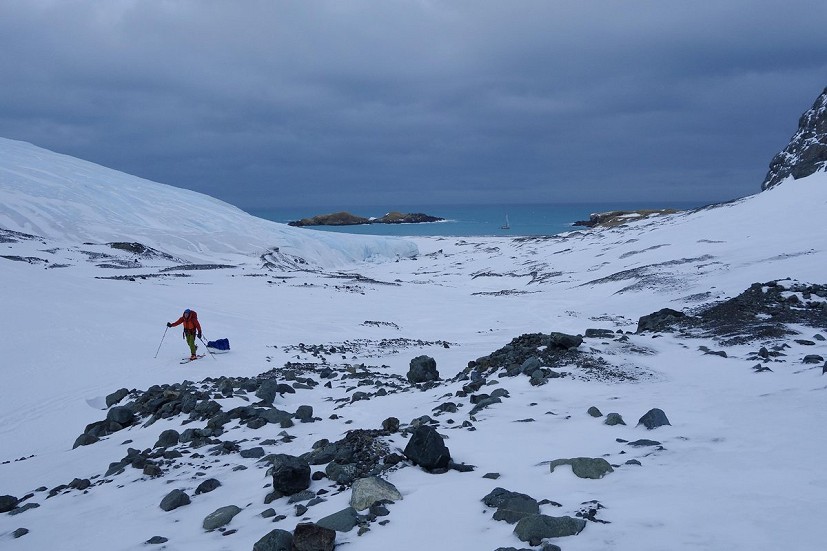
Stephen: 2010 was a purely skiing trip, but I thought, right, next time I must try and get together a climbing team. We did that in 2014, with high hopes of having a go at Starbuck (and Baume), but because of blasting south-westerlies we never even managed to get into that southern part of the island, contenting ourselves instead with first ascents of the three Trident peaks, at the more amenable northeastern end of the island. But by now I had become mildly obsessed with those southern peaks, so Skip Novak and I put together proposals for another attempt in 2016. And this time we were lucky! Fantastic team, fantastic weather and – most important of all – calm conditions allowing us to get ashore at Trolhul – a bay just two days’ skiing from Starbuck.
It was very gratifying to see that my rising ledge line on the West Face was climbable. What I hadn’t noticed – but the canny Richardson spotted – was that the weakness continued spiralling right round the mountain, leading to a hanging ramp on the East Face. Which was just as well, as the headwall might otherwise have been unclimbable – crappy rock, almost vertical, with no discernible crack systems, overlaid by an equally useless coating of fragile rime.
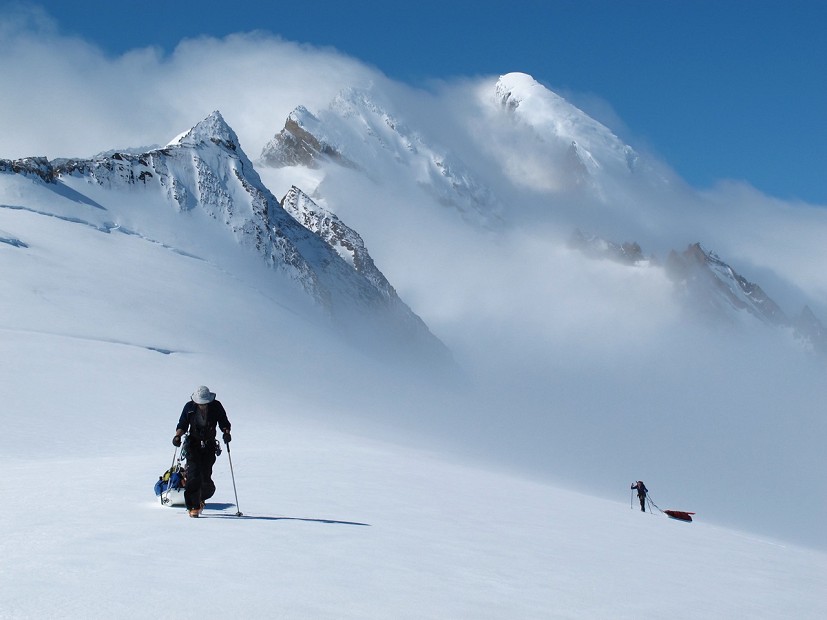
Simon: The climbing on Starbuck was more Scottish than Alpine. We climbed the route straight after a five-day storm. A freeze-thaw had consolidated the snow the day before, but even so, the difficult pitches were bold and awkward. The ice on the hanging ramp was only a centimeter thick in places and the entire pitch was protected by a single peg. It would not have been out of place on one of the big Grade VI thin face routes high on Ben Nevis.
Stephen: After 27 years dreaming and wondering, it was thrilling to get up Starbuck. Simon was in his element and led the whole route. I slightly regretted doing none of the leading as I’m not used to following other people up mountains, but if a really top alpinist signs up to your trip, that’s a fair deal: it makes sense for the best person to be in front. The main thing is that five out of the six of us all got to the summit (David Lund waited gallantly at one of the belay ledges to speed up the process for the rest of us).
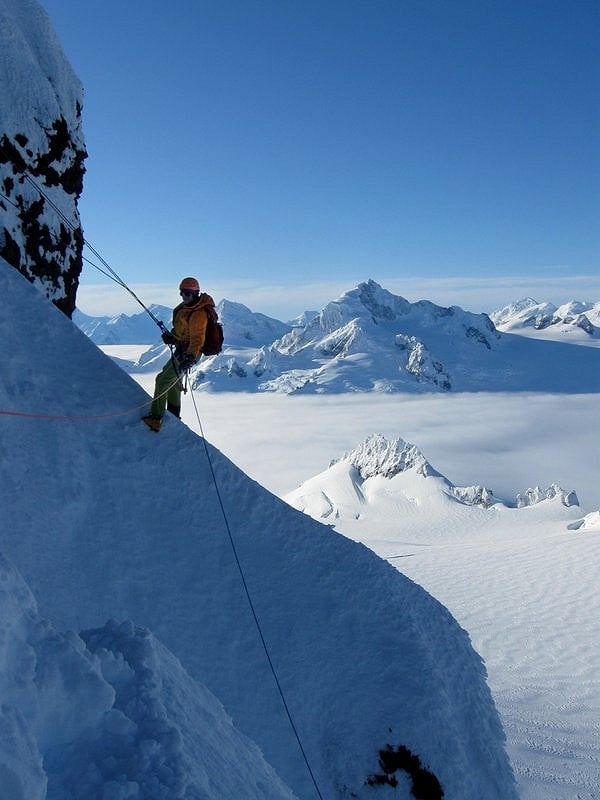
Simon: We climbed two other unclimbed peaks near Starbuck before moving on to Mt Baume. This was more alpine than Starbuck and the route was climbed in a 27-hour round trip. We graded it Scottish V and TD. Four of us reached the summit, but Henry and David opted to make the second ascent of Mount Pelagic instead. Henry then skied down the north ridge – one of the most impressive ski descents yet made in South Georgia.
Stephen: On Baume, ‘my’ route was going to be up the South Ridge. But Skip and Crag pointed out that the line up the North Buttress, which they had tried in 2005, started higher and was shorter and more direct. They were right and the climbing – at least the first section of mixed climbing, led by Crag in the dark – was really enjoyable. Above that it was the sort of climbing I hate – interminable snow and ice fields, in the hot midday sun. But the reward was the most fantastically vertiginous summit I have ever visited, with an awesome drop six thousand feet straight down into the sea. Magnificent.
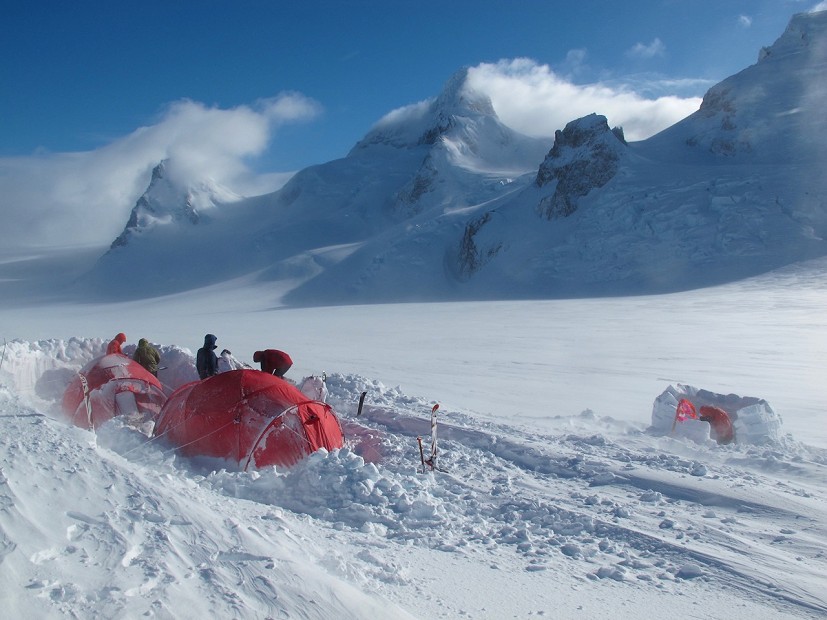
Simon: It is easy to focus on the climbing aspects, but success in South Georgia requires a wide range of experience. We were fortunate to have a strong team that had sailing, skiing and survival expertise as well as Alpine and Scottish Winter climbing skills. Perhaps the largest factor that catches people out is being able to endure long periods of ferocious weather. Early in the trip we were trapped in our tents for five nights due to extreme wind and snow, but without South Georgia survival expertise we would have had to retreat.
Stephen: Skip, Crag and I have all been doing expeditions to South Georgia for over 25 years. In fact Crag has probably made more first ascents there than anyone, ever. All of us have been reduced on occasion to crawling on hands and knees, when the wind made standing impossible. We have all also seen tents either implode or get ripped out of people’s hands as they take off like demented spinnakers heading for the South Pole. So we tend to be rather cautious and travel heavy. The Terra Nova tents, for instance, are full spec, with reinforced flysheets, snow valances, double poles and so on. We carry lots of shovels and snow saws to be able to dig our way out of trouble, and we always have a generous allowance of spare food and gas. All of which weighs far too much to put in a rucksack, so it gets packed in pulks, which glide like a dream when the going is good, and drive you mad when the terrain is less amenable.
In the early season, with snow down to the beach if you are lucky, skis are the only sensible way to travel and they make the downhill bits hugely enjoyable (pulks notwithstanding). The plan for this trip was to have a maximum of 15 days ashore, with the hope that we might at least get one brief spell of stable weather during that time. In the event we got ten days perfect settled weather and the luxury of being able to climb a peak, have a rest day, and then go and climb another peak!
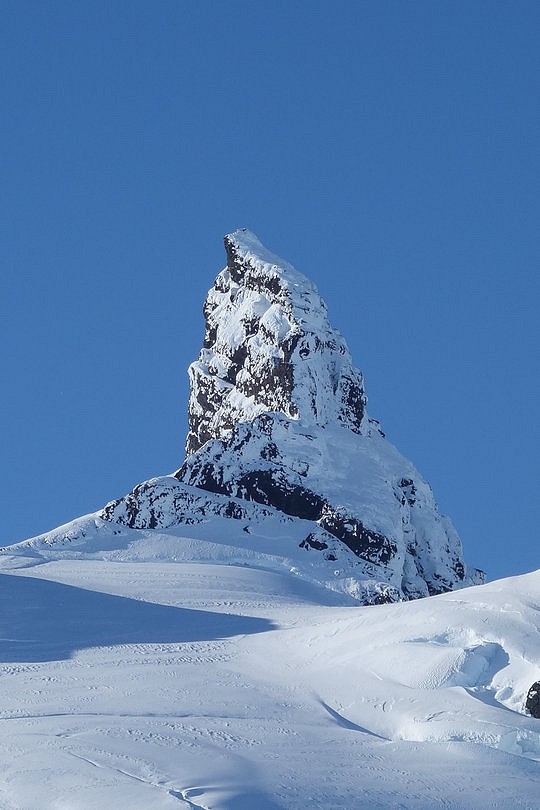
Simon: South Georgia has not been fully explored and only a quarter of its 300 mountains have been ascended. Crag, Skip and Stephen have done the lion’s share of significant ascents in recent times, and consider Starbuck and Baume to be amongst the most technical mountains yet climbed.
Stephen: The remoteness is a huge part of the appeal of climbing on South Georgia. Apart from twenty or so BAS scientists at King Edward Point and Bird Island, the nearest other human beings – and the nearest airport – are 800 miles away in the Falklands. There is no rescue infrastructure, so each expedition has to have its own dedicated vessel standing by for emergencies. It was nice to think, as we skied through the Salvesen Range (the southern part of the island) that perhaps only ten parties had ever been through here and the last one was my own trip six years ago. Now… if you had to choose between that, or standing behind a queue of a hundred people at the Hillary Step…
Read a UKC Interview with Simon.

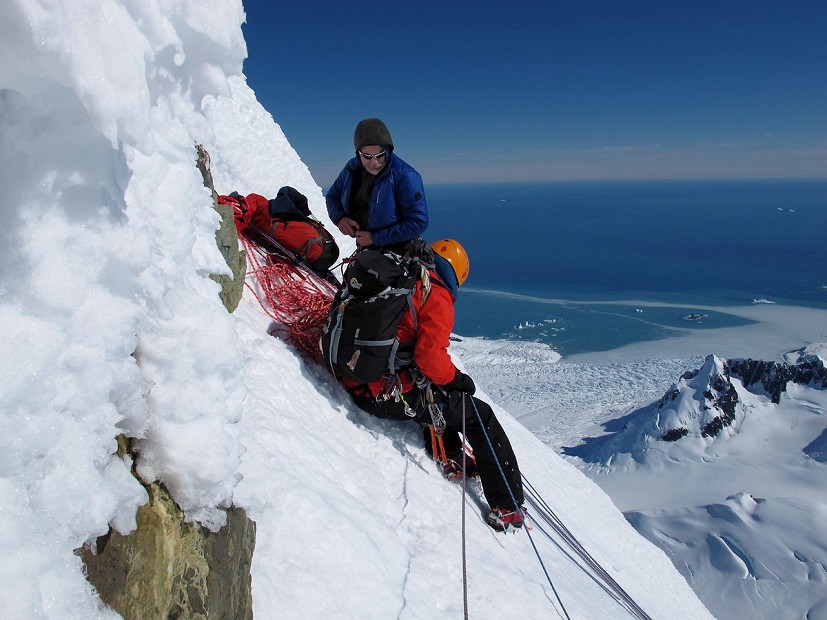












Comments